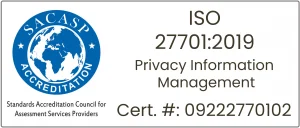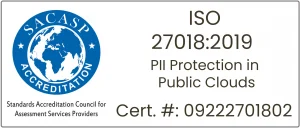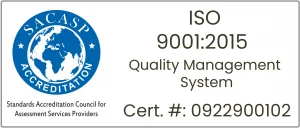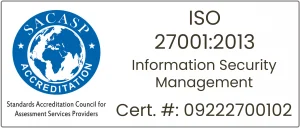In the intricate world of banking and payments, compliance stands as a cornerstone, ensuring the integrity and trustworthiness of financial systems. Compliance in the financial sector refers to adhering to a myriad of legal standards and regulations set forth by both governmental and international bodies. These regulations are designed to protect the financial system from abuses such as fraud, money laundering, and the financing of terrorism. The significance of compliance cannot be overstated, as it not only safeguards the institution’s operations but also builds trust with customers, stakeholders, and regulatory authorities.
Failure to comply with these regulations can have severe repercussions. Non-compliance can result in substantial financial penalties, sanctions, and legal actions. Beyond the immediate financial impact, the reputational damage caused by non-compliance can lead to a loss of customer trust and, ultimately, business opportunities. In extreme cases, persistent non-compliance may even lead to the closure of business operations. Thus, maintaining robust compliance practices is essential for the sustainability and success of financial institutions.
In this blog, we will delve into the complexities of compliance in cross-border payments, exploring the critical roles of AML (Anti-Money Laundering) and KYC (Know Your Customer) processes. By examining global and country-specific regulations, as well as the importance of customised compliance workflows, we aim to provide a comprehensive guide for financial institutions. This blog will make a difference by offering actionable insights and best practices, helping institutions navigate regulatory demands effectively, enhance security, and build trust in the global financial landscape.
AML/KYC Compliance in Cross Border Payments
AML/KYC compliance is crucial in ensuring the integrity and security of cross-border payments. These processes help financial institutions prevent financial crimes by verifying customer identities and adhering to international and local regulations.
Role of AML/KYC Compliance in Cross Border Payments
AML measures are designed to detect and prevent the movement of illicit funds through the financial system, involving activities such as transaction monitoring, suspicious activity reporting, and adherence to regulatory guidelines.
KYC processes focus on verifying the identities of customers during the onboarding stage, ensuring that individuals and entities are legitimate. This involves collecting and verifying personal information, such as identification documents and proof of address. By thoroughly verifying customer identities, financial institutions can prevent financial crimes like money laundering, fraud, and terrorist financing.
Robust AML/KYC practices not only protect institutions from legal and reputational risks but also contribute to the integrity and security of the global financial system.
Global and Country-Specific KYC/AML Rules
FATF provides comprehensive guidelines that many countries adopt to combat money laundering and terrorist financing. The EU’s Fourth and Fifth AML Directives, for instance, require member states to implement stringent AML/KYC measures, focusing on transparency and the prevention of financial crimes.
However, individual countries have specific regulations that can impact global transactions. In the United States, the Bank Secrecy Act (BSA) and the USA PATRIOT Act mandate rigorous AML programs, including customer due diligence and transaction reporting. The United Kingdom’s Money Laundering Regulations (MLR) align with EU standards but include additional requirements for high-risk scenarios.
These country-specific rules necessitate that financial institutions operating across borders remain agile and well-informed to ensure compliance, as variations in regulations can complicate international transactions.
Importance of Customised AML/KYC Workflow in CBP
Customised workflows offer the flexibility needed to tailor compliance measures to the specific regulatory requirements of different jurisdictions, ensuring that institutions can effectively meet both local and international standards.
This approach enhances operational efficiency by streamlining compliance processes, thereby reducing the time and resources needed for customer onboarding and transaction monitoring. By enabling institutions to focus on high-risk areas, customised workflows significantly improve the ability to mitigate risks associated with various customer segments and transaction types.
An intuitive platform that ensures compliance, incorporates the latest technologies, and boasts strong third-party integration capabilities helps organisations reduce operational costs and enhance their overall security posture. This allows institutions to navigate the complex landscape of cross-border payments with greater ease and confidence.
Compliance in the Forefront of CBP Transactions (B2C & B2B)
Compliance in cross-border payments (CBP) transactions is crucial for both business-to-consumer (B2C) and business-to-business (B2B) operations. Adhering to stringent regulatory standards ensures the integrity of financial transactions, protects against fraud, and builds trust with stakeholders. By prioritising compliance, organisations can navigate the complexities of international finance while minimising legal risks and enhancing their reputation in the global marketplace.
Let us explore some of the important aspects:
Transaction Age Limit Settings
Transaction age limit is the maximum timeframe allowed for a customer to complete a transaction after initiating it. Once the limit expires, the system raises red flags, indicating a potential transaction abandonment. Upon reaching the transaction age limit, the system can trigger various actions, such as sending automated reminders via email, SMS, or push notifications, to address customer concerns and guide them through the money transfer process. This approach helps ensure transactions are completed efficiently and securely, reducing the risk of incomplete transactions, and enhancing customer satisfaction.
Tri-Credit Validation (GBG)
This process involves verifying credit information from three major credit bureaus, providing a thorough assessment of creditworthiness. Such validation confirms the legitimacy and reliability of the parties involved, reducing fraud risk. GBG’s tri-credit validation enhances credit assessment accuracy, improves transaction security, and streamlines decision-making, leading to more secure and reliable payment systems.
Fraud Detection and Analysis
Types of fraud, such as identity theft, structuring (the practice of breaking large transactions into smaller ones to avoid detection), and document duplication, pose significant risks to the integrity of financial transactions.
To combat these threats, financial institutions employ advanced analytics, machine learning, and real-time transaction monitoring tools. These methods enable the detection of suspicious patterns and behaviours, allowing institutions to take proactive measures to prevent fraud. By leveraging these technologies, institutions can enhance their ability to safeguard against fraudulent activities, ensuring the security and trustworthiness of cross-border transactions.
Terrorism Financing (CTF) – Validating Customer’s Social Behaviour Analysis
CTF involves monitoring and analysing financial transactions to detect and disrupt potential terrorism financing. Techniques such as analysing customer behaviour, including social media activity and transaction patterns, provide deeper insights into unusual or suspicious activities that may indicate terrorism financing. By validating customer behaviours through these methods, financial institutions can identify and mitigate risks associated with terrorism financing, thereby contributing to global security efforts.
Flagging Suspicious Customers
The watchlists identify individuals and entities involved in illicit activities, and financial institutions must screen and monitor customers against these lists to avoid engaging with flagged entities. The process includes continuous screening of customer data, investigating suspicious activities, and reporting to relevant authorities. Tools and technologies that assist in this process, such as automated watchlist screening and compliance software, enhance the efficiency and accuracy of monitoring efforts. These technologies ensure that financial institutions remain vigilant and compliant with regulatory requirements, thereby maintaining the integrity of their operations.
Benefits of Strategic Compliance in Cross-Border Payments
Implementing strategic compliance in cross-border payments enhances operational efficiency, mitigates risks, and builds a trustworthy reputation with customers and regulatory bodies.
Let us introspect some of the advantages:
Regulatory Adherence and Risk Mitigation
Strategic compliance frameworks ensure businesses comply with AML, CTF, and other regulations, vital for seamless operations worldwide. Avoiding legal pitfalls, hefty fines, and safeguarding against financial crimes, these strategies protect assets and reputation.
Enhanced Customer Trust and Reputation
A commitment to compliance builds trust, ensuring secure financial transactions and long-term loyalty from customers. A solid compliance track record boosts standing with regulators and peers, opening doors to new business ventures. Trustworthy institutions attract loyal customers, fostering growth and market expansion.
Operational Efficiency and Cost Savings
Implementing standardised compliance procedures across operations can lead to more efficient and faster transaction processing, reducing bottlenecks and delays. Preventing compliance breaches avoids the financial burden of fines, legal costs, and the expenses involved in rectifying violations. By maintaining strict compliance, businesses can avoid the high costs associated with defending against legal disputes and regulatory investigations.
Access to Global Markets
Compliance with local regulations is often a prerequisite for entering new international markets. By ensuring compliance, businesses can confidently expand their operations globally. Strategic compliance enables seamless cross-border transactions by aligning with international regulatory standards, fostering partnerships with global financial institutions and payment processors.
Competitive Advantage
Businesses that showcase robust compliance frameworks are more attractive to clients and partners who prioritise security and reliability in financial services. Effective compliance management can be a unique selling point, setting the business apart from competitors who may struggle with regulatory issues.
Improved Fraud Detection and Prevention
Strategic compliance often involves deploying sophisticated technologies for fraud detection and prevention, which can identify and mitigate fraudulent activities more effectively. Robust fraud prevention measures protect both the business and its customers from financial losses and security breaches, enhancing overall trust and security.
Strategic Decision-Making
Compliance frameworks provide valuable insights into regulatory changes and trends, helping businesses make informed strategic decisions. By integrating compliance into strategic planning, businesses can ensure that their long-term strategies are aligned with regulatory requirements, reducing the risk of future compliance issues.
Regulatory Intelligence and Adaptability
Monitoring of regulatory developments ensures that businesses remain compliant with changing laws and regulations. A proactive compliance approach allows businesses to quickly adapt to regulatory changes, minimising operational disruptions and maintaining compliance.
Data Security and Privacy
Compliance with stringent data protection regulations ensures that sensitive customer information is safeguarded against breaches and misuse. Maintaining high standards of data security and privacy creates a secure environment for cross-border transactions, enhancing customer trust.
Sustainable Business Growth
A strong compliance culture promotes ethical practices and transparency, which are essential for sustainable growth. By proactively managing compliance, businesses can ensure their long-term viability and success in the competitive global financial market.
Strategies that the organisations should follow to mitigate risk
To effectively manage risks in cross-border payments, organisations must adopt comprehensive strategies tailored to the complex regulatory environment. Implementing these strategies not only ensures compliance but also enhances operational efficiency and safeguards against financial crimes.
Conduct Risk Assessments
- Regularly Evaluate Potential Compliance Risks: Frequently assess and identify risks related to compliance in cross-border payments to stay ahead of potential issues and maintain regulatory standards.
- Identify Vulnerabilities in Cross-Border Payment Processes: Scrutinise every step of the payment process to pinpoint weak spots that could be exploited for financial crimes.
- Develop Risk Mitigation Strategies: Create comprehensive strategies to address identified risks, including implementing additional security measures, revising operational procedures, and ensuring compliance with current regulations.
Implement Robust Compliance Procedures
- Establish Comprehensive AML and KYC Protocols: Implement thorough Anti-Money Laundering (AML) and Know Your Customer (KYC) procedures to verify customer identities and monitor transactions, preventing financial crimes and ensuring regulatory compliance.
- Automate Compliance Workflows for Efficiency: Use advanced technology to automate compliance processes, reducing human error and ensuring consistent application across all transactions.
- Integrate Advanced Fraud Detection Tools: Employ sophisticated fraud detection technologies to identify and prevent fraudulent activities, including monitoring transaction anomalies and conducting thorough background checks on customers.
Stay Updated with Regulatory Changes
- Monitor Domestic and International Regulatory Developments: Keep a close watch on regulatory changes both domestically and internationally to adapt to new rules and maintain compliance across different jurisdictions.
- Adapt Compliance Practices to New Regulations: Regularly update compliance practices to align with new regulatory requirements, including revising procedures, training staff, and upgrading technology.
- Maintain Close Relationships with Regulatory Bodies: Engage with regulatory bodies, industry associations, and legal experts to stay informed about upcoming regulatory changes, ensuring preparedness for new compliance standards.
Train and Educate Employees
- Provide Regular Training on Compliance Requirements: Conduct ongoing training sessions to keep employees informed about the latest compliance requirements and best practices, ensuring a knowledgeable and compliant workforce.
- Ensure Staff Understand the Importance of Regulatory Adherence: Emphasise the importance of compliance and the potential consequences of non-compliance to ensure all employees are committed to following regulatory guidelines.
- Foster a Culture of Compliance within the Organisation: Promote a culture where compliance is a core value, encouraging employees to prioritise regulatory adherence in their daily activities and recognising those who demonstrate a strong commitment to compliance.
Understanding Blocking Regulations
The advent of blocking regulations enabled the sharing of certain types of information or assets across borders. These can be related to sanctions, data privacy laws, or national security concerns. Different countries have varying regulations and can hinder the ability to conduct thorough compliance investigations, particularly when it involves accessing data or assets in restricted countries.
Benefits of Blocking Regulations
- Security and Privacy: Blocking regulations protect sensitive information and assets from being accessed or exploited by foreign entities. They ensure that personal data and strategic assets remain within the legal jurisdiction of the home country.
- Compliance with International Laws: These regulations help businesses comply with both local and international laws, avoiding legal conflicts and sanctions that can arise from operating in multiple jurisdictions with differing legal requirements.
- Risk Mitigation: By enforcing strict compliance with blocking regulations, companies can mitigate risks associated with financial crimes, such as money laundering and terrorism financing, ensuring that their operations are secure and legitimate.
- Challenges and Mitigation Strategies: While blocking regulations are beneficial, they also pose significant challenges for cross-border compliance investigations. The primary challenge is the restriction on data sharing, which can hinder thorough investigations and compliance checks.
To navigate these challenges, companies can:
- Seek Local Legal Advice: Engaging with legal experts in the specific jurisdictions where they operate can help companies understand and comply with local regulations.
- Implement Strict Data Management Policies: Establishing robust data management and protection policies ensures that companies handle sensitive data in compliance with relevant regulations.
- Leverage Advanced Technology: Utilising automated compliance tools and real-time monitoring systems can enhance the efficiency and effectiveness of compliance efforts. These technologies can help detect and prevent violations of blocking regulations.
- Collaborate with Regulatory Authorities: Building strong relationships with regulatory bodies can facilitate better communication and understanding of compliance requirements. This collaboration can also provide companies with guidance on navigating complex regulatory landscapes.
- Conduct Regular Training: Educating employees about the importance of blocking regulations and how to manage sensitive data appropriately is crucial. Regular training sessions can help ensure that all staff members are aware of and adhere to compliance protocols.
NetRemit’s role in creating a paradigm shift in the Finance arena
NetRemit is transforming the finance sector by seamlessly integrating advanced compliance measures into its cross-border payment suite. Key features include watchlist flagging for potential matches on OFAC, UNSC 1267, EU, or HMRC lists, and tri-credit validation through trusted third-party partners to enhance the accuracy of customer identity checks. The platform also employs sophisticated terrorism financing analysis, utilising adverse media and social network data to identify potential threats. Additionally, comprehensive fraud detection systems check for identity theft, structuring, and document duplication, ensuring the integrity of transactions.
The platform adheres to both global and country-specific KYC/AML regulations for beneficiary validation, ensuring compliance with local laws while maintaining high standards of verification. It also includes automatic suspicious transaction reporting to relevant regulatory authorities, facilitating timely detection and reporting of potentially illegal activities.
NetRemit allows users to set various transaction rules and limits, including daily, weekly, and monthly thresholds. This capability helps detect and prevent money laundering techniques like smurfing and structuring. By embedding these robust compliance protocols, NetRemit not only enhances security and transparency but also accelerates transaction processing, reducing operational overheads and delays. This comprehensive, compliant-centric approach establishes NetRemit as a trustworthy partner for financial institutions, setting new standards for efficiency, security, and regulatory compliance in the finance industry.
Wrapping Up
Compliance stands as the bedrock of integrity and security in the realm of cross-border payments, ensuring that financial transactions are conducted legally, ethically, and responsibly. It protects financial institutions from legal and reputational risks while fostering trust and confidence among customers and stakeholders. The dynamic nature of the CBP industry, driven by evolving regulatory requirements, technological advancements, and emerging risks, demands that financial institutions remain adaptable and proactive.
NetRemit emerges as an invaluable ally bringing regulatory expertise, real-time screening and monitoring, risk assessment, and enhanced security measures. They provide cost-effective compliance solutions that optimise transaction processes, reduce overheads, and minimize the risk of costly legal actions due to non-compliance. By integrating this platform, financial institutions can effectively navigate the intricate compliance landscape, mitigate risks, and ensure the integrity and security of their operations.
Through innovative solutions and customisation capabilities, we enable financial institutions to stay ahead of regulatory demands, delivering superior results and fostering a secure financial environment. For tailored solutions and dedicated support, reach out to us at +44 (0)204 574 2433 or via email at salesdesk@MacroGlobal.co.uk. Our team is ready to connect with you, understand your requirements, and provide the expertise needed to thrive in the global financial landscape.
Ready to get started?
We can’t wait to show you what’s possible with NetRemit.
Related Posts
Powering the Gig Economy with Instant Cross-Border Payments
See why instant cross-border payments are essential for the gig economy, eliminating delays, high fees, and inefficiencies while boosting global workforce efficiency.
Intelligent Payment Routing (IPR) – An Essential for P2P and B2B Remittance Businesses
Maximize efficiency in P2P and B2B remittance with Intelligent Payment Routing that ensures optimal transaction routing and settlement. Know how!
Alternative payment methods: What Cross Border Payments Businesses Need to Know
Here’s what you need to know about alternative payment methods for remittances to keep up with customer demands, i.e., frictionless and more affordable than traditional methods.


















